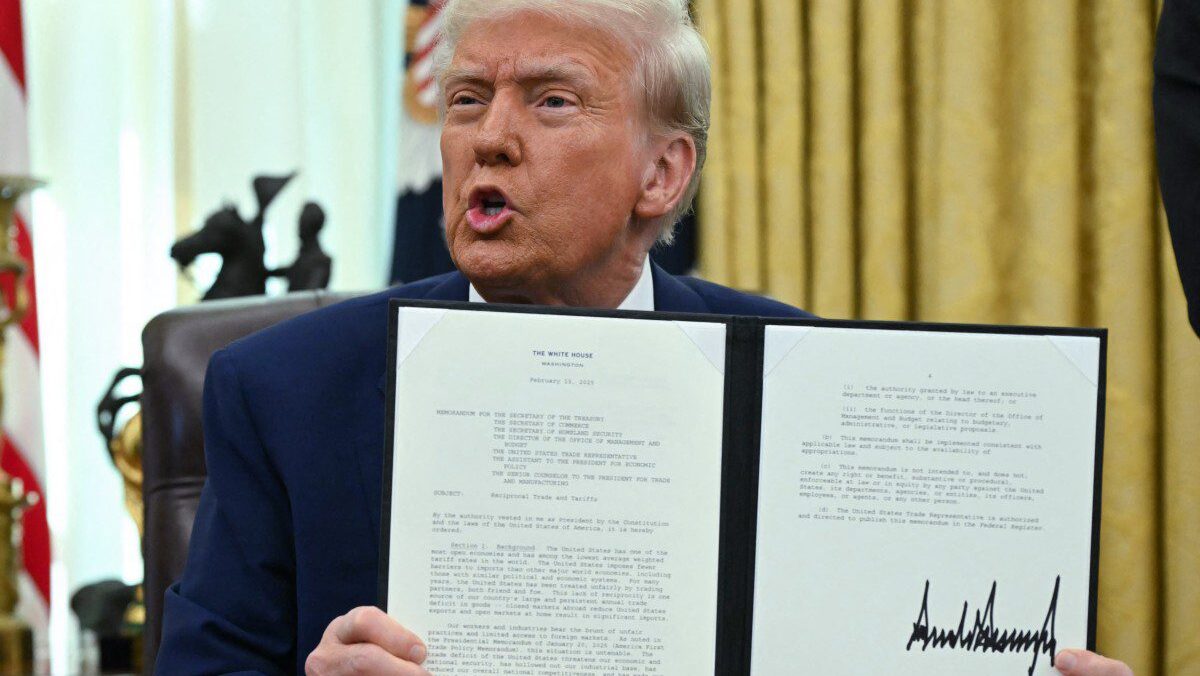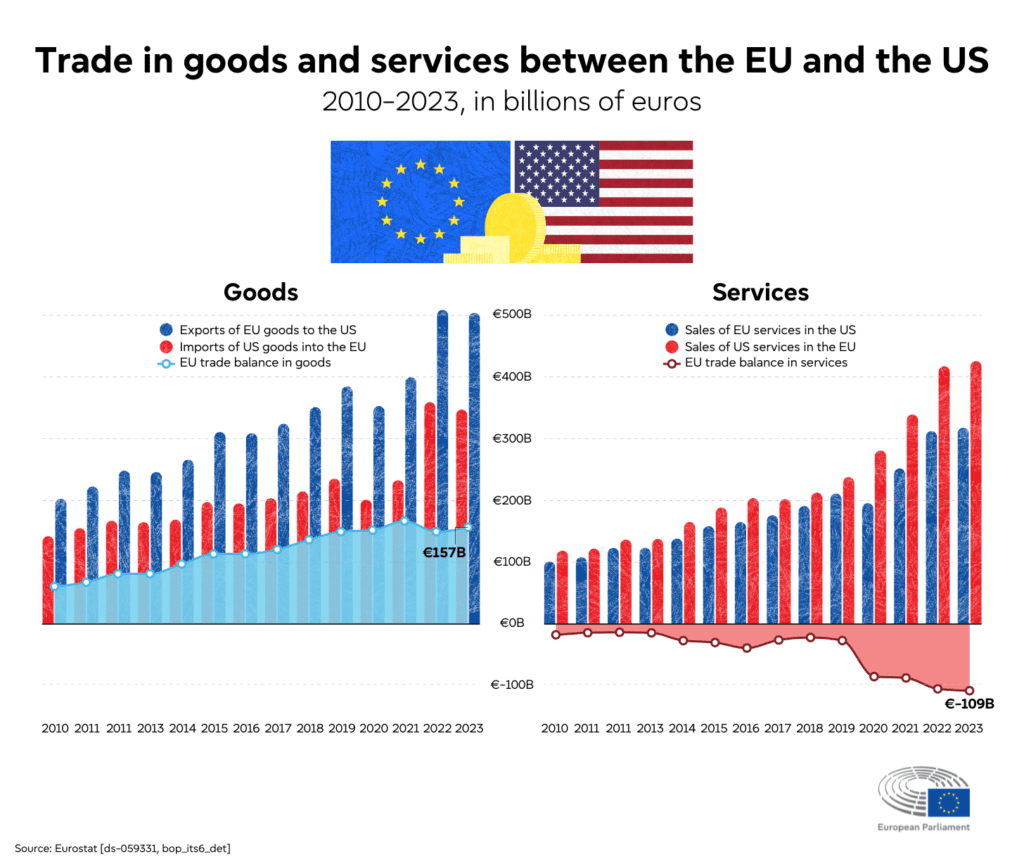
U.S. President Donald Trump speaks while showing the executive order on reciprocal tariffs he signed in the Oval Office of the White House in Washington, D.C., on February 13, 2025. Trump announced that he would impose “reciprocal tariffs” on trading partners, opening new fronts in his trade war. The move would match U.S. tariff rates on imports to the levels that other countries impose on US goods.
Photo: ANDREW CABALLERO-REYNOLDS / AFP
U.S. President Donald Trump on Thursday, February 13th, announced the imposition of “reciprocal tariffs” on countries that tax American products. The aim is to equalize the rates those nations apply to U.S. exports, with the European Union among the primary targets.
Facing the press in the Oval Office, where he stated his intention to sign a memorandum enacting this order, Trump declared
For the sake of fairness, I am going to impose reciprocal tariffs, which means that whatever a country makes the U.S. pay, we will charge them the same, no more, no less.
Such tariffs could affect any country in the world, though the president noted they will “especially impact those with a value-added tax (VAT) system.” Additionally, the United States will not allow so-called triangulation, in which goods are sold through third countries to evade tariffs.
The tariff war between the United States and the EU has become a central global economic debate in an era of growing protectionism and trade disputes. Despite the narrative that the Trump administration initiated this confrontation, data suggests that the EU has historically imposed more tariffs on the U.S. than vice versa. While the U.S. applies relatively low tariffs on European goods, the EU imposes significantly higher rates on strategic sectors such as the automotive industry, agricultural products, and technology.
Washington’s strategy, therefore, follows a logic of economic reciprocity aimed at correcting a growing trade deficit.
Trade between the EU and the U.S. reflects a significant imbalance favoring the European bloc. According to Eurostat data, the EU’s trade surplus with the U.S. reached €157 billion in goods in 2023. Even when including services, the balance remains positive for Europe, although with a progressive deterioration, as the U.S. recorded a €109 billion services deficit with the EU.

Trade tensions between the U.S. and the EU are not new. In recent years, Washington and Brussels have clashed over key industries. One notable case was the 2018 dispute over steel and aluminum tariffs, when the Trump administration imposed 25% and 10% tariffs, respectively, prompting EU retaliation. Frictions have also emerged in the aerospace industry, with prolonged legal battles between Boeing and Airbus in the World Trade Organization (WTO). These conflicts have set the stage for the current trade escalation and reflect a long history of economic tensions between both powers.
This structural imbalance has been one of the Trump administration’s main arguments to justify the imposition of reciprocal tariffs. More broadly, the total U.S. trade deficit with the world surpassed $1.2 trillion in 2024, with China, Mexico, and Canada as the primary contributors.
President Trump has repeatedly denounced what he considers “unfair competition” based on protectionist regulatory practices and the Value-Added Tax (VAT). In his view, the European VAT acts as a hidden tariff, which does not tax exports but does tax U.S. imports in the European market.
The president was particularly critical of the EU, accusing it of being “absolutely brutal in trade” and imposing what he called a “hidden tariff” through VAT, which ranges from 17% in Luxembourg to 27% in Hungary.
Among the sectors most affected by these measures are European automobiles. Washington has threatened to impose additional tariffs on cars imported from the EU, arguing that Germany and other European countries impose restrictions on American vehicles. Agricultural products, technology, and the manufacturing industry are also at risk, as European regulations limit market access for U.S. companies—a measure Trump sees as protectionist.
The Trump administration has stated that these actions are not intended to start a trade war but to pressure the EU into lowering its tariff and trade barriers.
While Trump’s reciprocal tariff strategy has faced criticism, it has also highlighted the asymmetry in global trade. The EU finds itself in an uncomfortable position: on the one hand, it criticizes U.S. protectionism, yet on the other, it maintains restrictive trade policies that harm American interests. Brussels cannot condemn Washington’s policy without revealing its protectionist stance.
In the short term, tariff escalation could increase consumer costs in both regions and disrupt global supply chains. However, in the long run, it could force the EU to negotiate a more balanced trade agreement with the U.S., preventing trade tensions from escalating into a prolonged conflict. Can Brussels engage in this trade battle while also handling Ukraine’s reconstruction, as some EU defense ministers have been advocating?Meanwhile, Trump reiterated his threats to impose a 100% tariff on the BRICS nations—including Brazil, Russia, India, China, and South Africa: “The BRICS were created with bad intentions,” Trump claimed, adding that “if they mess with the dollar, we will impose a 100% tariff on them the very same day.”
